
Texas A&M University is a public land-grant research senior military college in College Station, Texas. It was founded in 1876 and became the flagship institution of the Texas A&M University System in 1948. As of Fall 2021, Texas A&M's student body is the largest in the United States. Texas A&M is the only university in Texas to hold simultaneous designations as a land, sea, and space grant institution. In 2001, Texas A&M was inducted as a member of the Association of American Universities. The school's students, alumni and sports teams are known as Aggies. The Texas A&M Aggies athletes compete in eighteen varsity sports as a member of the Southeastern Conference.

The Texas A&M University Corps of Cadets is a student military organization at Texas A&M University. Established with the University in 1876, it is the oldest student organization on campus.

The Aggie Yell Leaders are a group of Texas A&M University students that lead Aggie fans in a series of "yells" during athletic events or other school events. The Yell Leaders are composed of five students who are elected annually by popular vote of the student body.
Midnight Yell Practice, known locally as Midnight Yell or Yell Practice, is a tradition at Texas A&M University. Midnight Yell is similar to a pep rally. On the night before each home football game, Midnight Yell takes place in Kyle Field at midnight; two nights before each away game, a Yell Practice is held near the Quadrangle on the south side of campus. At midnight on the night before an away game Midnight Yell is held in or near the opponent's city.

The Aggie Bonfire was a long-standing annual tradition at Texas A&M University as part of the college rivalry with the University of Texas at Austin. For 90 years, Texas A&M students—known as Aggies—built a bonfire on campus each autumn, known to the Aggie community simply as "Bonfire". The event symbolized Aggie students' "burning desire to beat the hell outta t.u.", a derogatory nickname for the University of Texas.
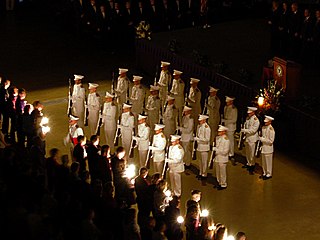
Aggie Muster is a tradition at Texas A&M University which celebrates the camaraderie of the university while remembering the lives of alumni who have died, specifically those in the past year. Muster officially began on April 21, 1903, as a day for remembrance of fellow Aggies. Muster ceremonies today take place in approximately 320 locations globally. The largest muster ceremony occurs in Reed Arena, on the Texas A&M campus. The "Roll Call for the Absent" commemorates Aggies, alumni and current students, who died that year. Alumni, family, and friends light candles and as they answer “here” when the name of their loved one is “called”. Campus muster also serves as a 50th-year class reunion for the corresponding graduating class. Some non-campus muster ceremonies do not include the pageantry of the campus ceremony, and might consist simply of a barbecue.
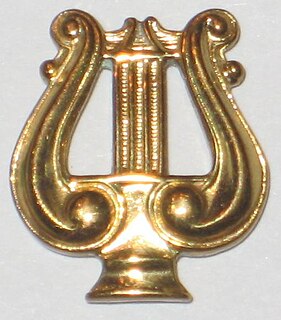
The Fightin' Texas Aggie Band is the official marching band of Texas A&M University. Composed of over 400 men and women from the school's Corps of Cadets, it is the largest military marching band in the world. The band's complex straight-line marching maneuvers are performed exclusively to traditional marches.
Texas A&M University at Galveston (TAMUG) is an ocean-oriented branch campus of Texas A&M University offering both undergraduate and graduate degrees that are awarded from Texas A&M University in College Station. Students enrolled at Texas A&M University at Galveston, known affectionately as 'Sea Aggies', share the benefits of students attending Texas A&M University (TAMU) campus in College Station. TAMUG is located on Pelican Island, offering benefits for its maritime focused majors.
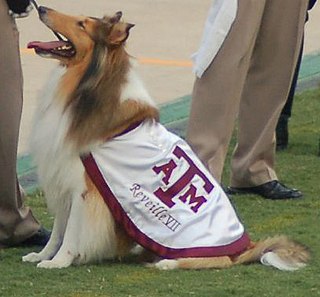
Reveille is the official mascot of Texas A&M University. Students adopted the first Reveille, a mixed-breed dog, in 1931. The cadets raised $100 during World War II to make Reveille a general, as part of a fundraiser for the K-9 Corps. Reveille is the highest-ranking member of the Texas A&M Corps of Cadets.

Michael Edward Fossum is a former American astronaut, engineer, and the Chief Operating Officer of Texas A&M University at Galveston. He flew into space on board the NASA Space Shuttle missions STS-121 and STS-124 and served as a mission specialist of Expedition 28 and commander of Expedition 29 aboard the International Space Station.
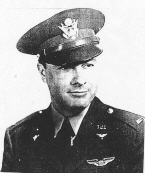
Horace Seaver "Stump" Carswell Jr. was a United States Army major who was killed in action while serving as a member of the Army Air Forces during World War II. He was posthumously awarded the Medal of Honor.

The traditions of Texas A&M University are a key aspect of the culture of Texas A&M University. Some of the school traditions date to the 1890s, shortly after the opening of the school, while others have been introduced more recently. These traditions encourage current students and alumni (Aggies) to cultivate the Aggie Spirit, a sense of loyalty and respect for the school, and dictate many aspects of student life, including how to greet others, how to act at an A&M sporting event, and what words a student may use in conversation. The most visible tradition among senior class students and alumni is the wearing of the Aggie Ring, whose design has been relatively unchanged since its introduction in 1894. Not all Aggie traditions are recognized by the university, and some, like Bonfire, have been discontinued for safety reasons. Texas Monthly states that the students' respect for school traditions and values is the university's greatest strength.
Elephant Walk is a tradition at Texas A&M University in which the senior class walks around campus to remember the good times they had at Texas A&M. This tradition generally takes place the week before the last regular-season football game, which before A&M's 2012 move to the Southeastern Conference was the Texas game. It signifies the last time that the seniors will stand as a part of the 12th Man student corpus.

The Ross Volunteer Company, commonly known as the Ross Volunteers, is the military escort of the governor of Texas and a unit of the Texas A&M Corps of Cadets.

The history of Texas A&M University, the first public institution of higher education in Texas, began in 1871, when the Agricultural and Mechanical College of Texas was established as a land-grant college by the Reconstruction-era Texas Legislature. Classes began on October 4, 1876. Although Texas A&M was originally scheduled to be established under the Texas Constitution as a branch of the yet-to-be-created University of Texas, subsequent acts of the Texas Legislature never gave the university any authority over Texas A&M. In 1875, the Legislature separated the administrations of A&M and the University of Texas, which still existed only on paper.
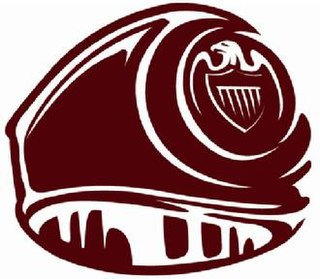
The Association of Former Students is the official alumni association of Texas A&M University and operates as a 501 (c)(3) organization. The association recognizes over 640,000 people as part of the Aggie Network and oversees 251 clubs worldwide. Known to Aggies as simply The Association, the group is dedicated to promoting the interests and welfare of Texas A&M University, perpetuating ties of affection and esteem that students formed during their college days, and serving the current student body.

The campus of Texas A&M University, also known as Aggieland, is situated in College Station, Texas, United States. Texas A&M is centrally located within 200 miles (320 km) of three of the 10 largest cities in the United States and 75% of the Texas and Louisiana populations. Aggieland's major roadway is State Highway 6, and several smaller state highways and Farm to Market Roads connect the area to larger highways such as Interstate 45.

Lloyd Herbert "Pete" Hughes Jr.,, was a pilot who held the rank of Second Lieutenant in the United States Army Air Forces who received the Medal of Honor for his actions in Operation Tidal Wave during World War II.
Many terms are unique to, or hold a special meaning connected with, Texas A&M University in College Station, Texas. The University, often called A&M or TAMU, is a public research university and is the flagship institution of the Texas A&M University System. It opened in 1876 as the Agricultural and Mechanical College of Texas, the first public institution of higher education in that state. In 1963, the Texas Legislature renamed the school to Texas A&M University to reflect the institution's expanded roles and academic offerings. The letters "A&M" no longer have any explicit meaning but are retained as a link to the university's past.

The Texas A&M Singing Cadets are a male choral group at Texas A&M University. Nicknamed "The Voice of Aggieland", the Singing Cadets have been touring for 109 seasons, with their roots in a glee club founded on the A&M campus in 1893. The Singing Cadets are one of the oldest collegiate singing organizations in the world. They have toured both in America and abroad and have earned recognition by doing so, including invitations to sing for American presidents. Contrary to their name, the Singing Cadets are not all members of the Corps of Cadets and have not been since 1965, when the university as a whole ceased mandating Corps membership. Between 1996 and 2006, the Singing Cadets traveled over 35,000 miles and performed more than 450 concerts worldwide.
















